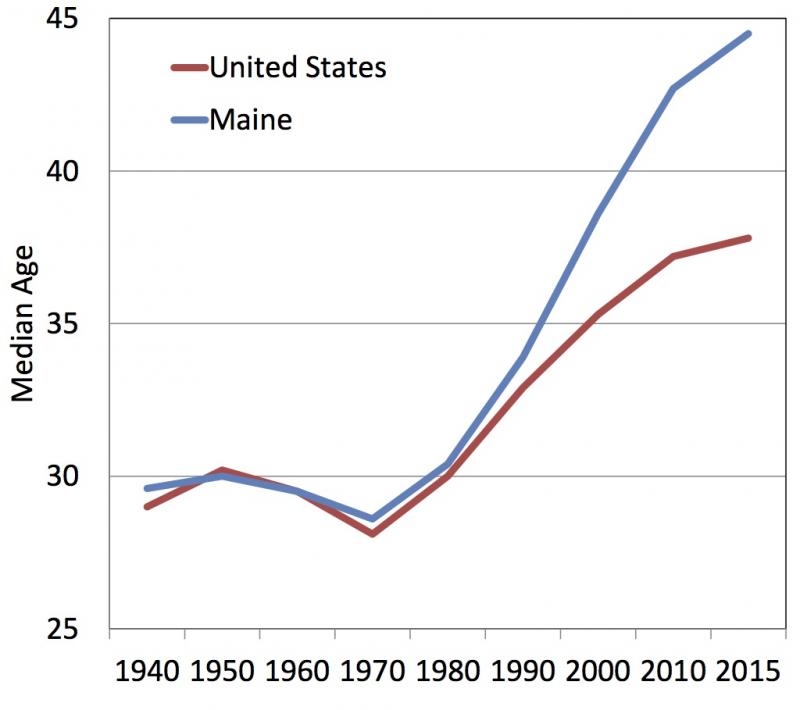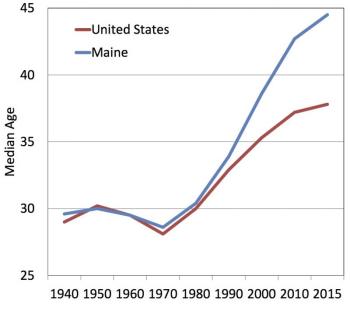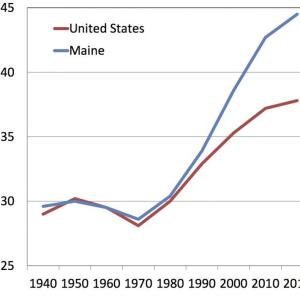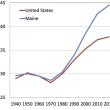Maine’s labor pool gets even older, fewer babies; higher-paying service jobs expected to increase
AUGUSTA — Here’s what we already know (or sense): Maine’s population is getting even more gray, fewer babies have been born in the state, and the median age in the state is 44.5 — making it the oldest state by median age, of at least seven years above the U.S. average.
We also know that employment has long been shifting from businesses that produce goods to those that provide services. Three-quarters of jobs are in now healthcare, government, retail, professional services, hospitality, or manufacturing.
And it doesn’t look like dramatic change is heading to the state anytime soon, according to the Maine Workforce Outlook, 2014 to 2024, a report from the Maine Department of Labor’s Center for Workforce Research issued Sept. 12.
The report projects that the state’s economic outlook remains fairly unchanged, as does its prospects for population growth.
The outlook is designed to provide information for three core purposes: to help employers address and plan for future workforce needs, to aid individuals in making informed career choices and to guide educational institutions in developing curriculum that aligns with the needs of both students and employers.
Commissioner of Labor Jeanne Paquette commented in the report in a press release: "This workforce outlook underscores the importance of connecting people who are out of work or underemployed, including people on welfare and people with disabilities, with the job skills necessary for in-demand occupations. We also need to seek new opportunities to attract workers and their families to Maine through efforts like the Hire-A-Vet campaign, Live+Work in Maine, and other collaborations. Furthermore, we must use apprenticeship and other training programs to increase the skills of our workers to attract new businesses, workers and opportunities for economic growth."
Detail on the outlook for workforce change in total and by age group is at www.maine.gov/labor/cwri/outlookDemographic.html. Detail on the outlook for job change for industries and occupations is at www.maine.gov/labor/cwri/outlook.html.
Event Date
Address
United States





























